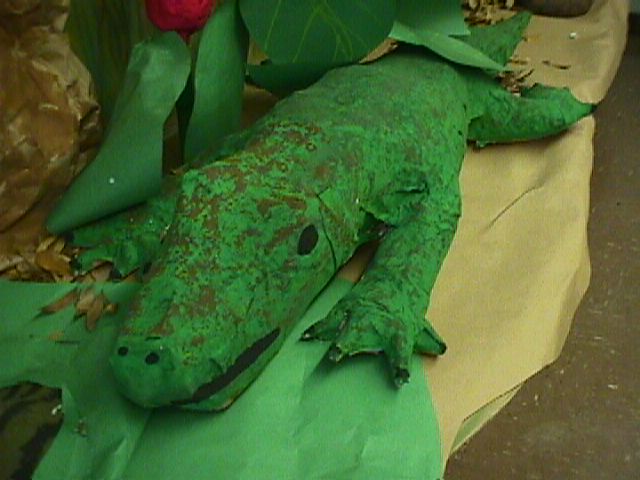

The Mugger Crocodile is known by quite a few
different names. Some are Indian swamp, Broad-snouted, or Marsh crocodiles.
The habitat of the crocodile is freshwater rivers, lakes and marshes.
They prefer slow-moving, shallow areas. They also like to live in
reservoirs, irrigation canals, and other man-made bodies of freshwaters.
A few crocodiles have been reported coming from saltwater lagoons. They
can migrate long distances over land in search of more suitable habitat.
Most crocodiles are generally light tan while juveniles with black cross-banding
on body and tail. Adults generally turn gray to brown, with little
banding remaining. Their size is medium to large, approximately 4
to 5 yards head to tail. Broad-snouted crocodile is the broadest of any
crocodile species, giving the mugger a more alligator appearance.
Enlarged scutes present around the throat area may serve a similar protective
function when moving through shallow swampy areas as they do in alligator
mississippiensis. The juveniles diet generally includes crustaceans, insects
and small fish. Adults eat larger fish, amphibians, reptiles
(mainly snakes and possibly turtles ), birds and mammals. Large adults
have been known to eat deer and buffalo. The females are sexually mature
for breeding around six years of age, while males are mature about ten
years of age. Nests are holes excavated during a dry season (from December
to February ). Location of the nest varies considerably (within burrows,
on occasion – not normally associated with breeding activities), but often
on sloping banks. The female usually lays about 25 to 30 eggs although
captive specimens have sometimes been observed laying two clutches per
year. Eggs hatch after a relatively short period, usually 55-75
days, and the juveniles are around 30cm long. Research into the effects
of the temperature upon the sex of the embryo has revealed that only male
embryos develop at 32.5C, with a greater percentage of the females produced
below and above this. Female only embryos are produced between 28C
and 31C. While the female usually guards the nest, opens it and transports
hatchlings to the water in her mouth, the male has been observed undertaking
this task in captive conditions.

